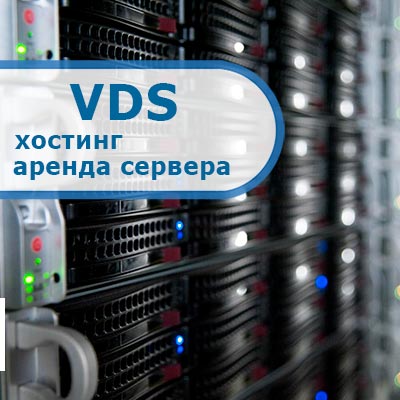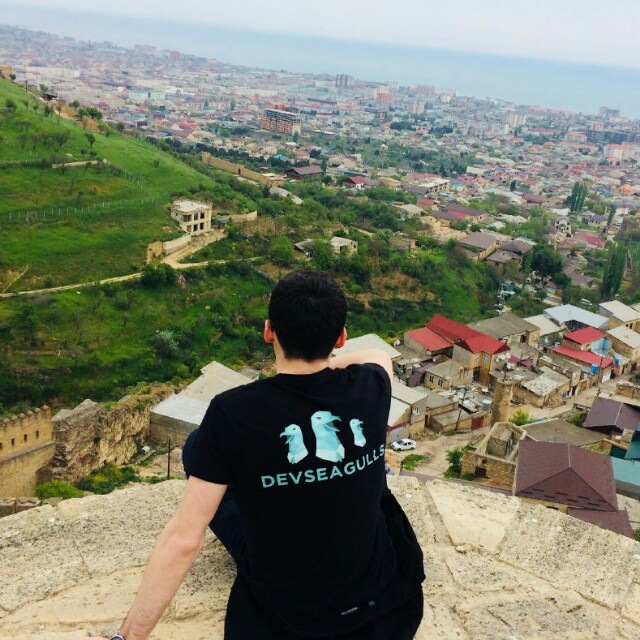С
Size: a a a
2020 April 16
На прошлой работе надо было добавить оперативку и др. Пришлось новый сервер там заказать и переходить на него. На облаке этого не пришлось бы делать. Они бы просто добавили бы мощностей. Источник: служба поддержки хостинга
ЗА
Если просто обычные компании могут потратить 30-40 человеколет на то, чтобы сделать свою систему масштабируемой и бессмертной в облаках
S
Вообще есть разные форматы работы, у меня где-то было сохранено
[
На прошлой работе надо было добавить оперативку и др. Пришлось новый сервер там заказать и переходить на него. На облаке этого не пришлось бы делать. Они бы просто добавили бы мощностей. Источник: служба поддержки хостинга
тоже самое можно сделать и на обычном хостинге
ЗА
У них наверно просто дедик был полноценный
S
Вообще есть разные форматы работы, у меня где-то было сохранено
Shared Hardware
Shared hardware is usually leased from large providers, such as an ISP and hosting service, where a box is shared with many other users. This kind of platform is great for prototyping, development, and even small scale launches. Web server configuration and custom modules are not usually possible.
Dedicated Hardware
In addition to the hardware being dedicated to running your application, you’re renting it from a provider who owns and maintains the hardware. With dedicated hardware, your contact still goes only as far as remotely logging in over SSH; you don’t need to swap out disks, rack machines, and so on. Dedicated hosting comes in the full range from completely managed (you receive a user login and the host takes care of everything else) to completely unmanaged (you get a remote console and install an OS yourself). You don’t need to have system administrators on your engineering team and you won’t spend developer time on configuration tasks.
Co-Located Hardware
A co-location facility (or “colo”) provides space, power, and bandwidth, while you provide the hardware and support. Some will do virtually nothing, while some provide server and service monitoring and will diagnose server issues with you over the phone. All facilities provide network monitoring and basic services such as rebooting a crashed server, although depending on your contract, such services might incur per-incident costs.
Self-Hosting
When you get to the point of having a few thousand servers, it’s usually beneficial to start running your own data centers (DCs). It usually involves designing purpose-built facilities, hiring 24-hour NOC and site operations staff, and having multiple redundant power grid connections, a massive uninterruptible power supply (UPS), power filtering and generation equipment, fire suppression, and multiple peering contracts with backbone carriers. (стр. 17-19)
Shared hardware is usually leased from large providers, such as an ISP and hosting service, where a box is shared with many other users. This kind of platform is great for prototyping, development, and even small scale launches. Web server configuration and custom modules are not usually possible.
Dedicated Hardware
In addition to the hardware being dedicated to running your application, you’re renting it from a provider who owns and maintains the hardware. With dedicated hardware, your contact still goes only as far as remotely logging in over SSH; you don’t need to swap out disks, rack machines, and so on. Dedicated hosting comes in the full range from completely managed (you receive a user login and the host takes care of everything else) to completely unmanaged (you get a remote console and install an OS yourself). You don’t need to have system administrators on your engineering team and you won’t spend developer time on configuration tasks.
Co-Located Hardware
A co-location facility (or “colo”) provides space, power, and bandwidth, while you provide the hardware and support. Some will do virtually nothing, while some provide server and service monitoring and will diagnose server issues with you over the phone. All facilities provide network monitoring and basic services such as rebooting a crashed server, although depending on your contract, such services might incur per-incident costs.
Self-Hosting
When you get to the point of having a few thousand servers, it’s usually beneficial to start running your own data centers (DCs). It usually involves designing purpose-built facilities, hiring 24-hour NOC and site operations staff, and having multiple redundant power grid connections, a massive uninterruptible power supply (UPS), power filtering and generation equipment, fire suppression, and multiple peering contracts with backbone carriers. (стр. 17-19)
С
тоже самое можно сделать и на обычном хостинге
мне так сказали со службы поддержки
S
Shared Hardware
Shared hardware is usually leased from large providers, such as an ISP and hosting service, where a box is shared with many other users. This kind of platform is great for prototyping, development, and even small scale launches. Web server configuration and custom modules are not usually possible.
Dedicated Hardware
In addition to the hardware being dedicated to running your application, you’re renting it from a provider who owns and maintains the hardware. With dedicated hardware, your contact still goes only as far as remotely logging in over SSH; you don’t need to swap out disks, rack machines, and so on. Dedicated hosting comes in the full range from completely managed (you receive a user login and the host takes care of everything else) to completely unmanaged (you get a remote console and install an OS yourself). You don’t need to have system administrators on your engineering team and you won’t spend developer time on configuration tasks.
Co-Located Hardware
A co-location facility (or “colo”) provides space, power, and bandwidth, while you provide the hardware and support. Some will do virtually nothing, while some provide server and service monitoring and will diagnose server issues with you over the phone. All facilities provide network monitoring and basic services such as rebooting a crashed server, although depending on your contract, such services might incur per-incident costs.
Self-Hosting
When you get to the point of having a few thousand servers, it’s usually beneficial to start running your own data centers (DCs). It usually involves designing purpose-built facilities, hiring 24-hour NOC and site operations staff, and having multiple redundant power grid connections, a massive uninterruptible power supply (UPS), power filtering and generation equipment, fire suppression, and multiple peering contracts with backbone carriers. (стр. 17-19)
Shared hardware is usually leased from large providers, such as an ISP and hosting service, where a box is shared with many other users. This kind of platform is great for prototyping, development, and even small scale launches. Web server configuration and custom modules are not usually possible.
Dedicated Hardware
In addition to the hardware being dedicated to running your application, you’re renting it from a provider who owns and maintains the hardware. With dedicated hardware, your contact still goes only as far as remotely logging in over SSH; you don’t need to swap out disks, rack machines, and so on. Dedicated hosting comes in the full range from completely managed (you receive a user login and the host takes care of everything else) to completely unmanaged (you get a remote console and install an OS yourself). You don’t need to have system administrators on your engineering team and you won’t spend developer time on configuration tasks.
Co-Located Hardware
A co-location facility (or “colo”) provides space, power, and bandwidth, while you provide the hardware and support. Some will do virtually nothing, while some provide server and service monitoring and will diagnose server issues with you over the phone. All facilities provide network monitoring and basic services such as rebooting a crashed server, although depending on your contract, such services might incur per-incident costs.
Self-Hosting
When you get to the point of having a few thousand servers, it’s usually beneficial to start running your own data centers (DCs). It usually involves designing purpose-built facilities, hiring 24-hour NOC and site operations staff, and having multiple redundant power grid connections, a massive uninterruptible power supply (UPS), power filtering and generation equipment, fire suppression, and multiple peering contracts with backbone carriers. (стр. 17-19)
Вот тут расписаны различные форматы с плюсами и минусами
С
Shared Hardware
Shared hardware is usually leased from large providers, such as an ISP and hosting service, where a box is shared with many other users. This kind of platform is great for prototyping, development, and even small scale launches. Web server configuration and custom modules are not usually possible.
Dedicated Hardware
In addition to the hardware being dedicated to running your application, you’re renting it from a provider who owns and maintains the hardware. With dedicated hardware, your contact still goes only as far as remotely logging in over SSH; you don’t need to swap out disks, rack machines, and so on. Dedicated hosting comes in the full range from completely managed (you receive a user login and the host takes care of everything else) to completely unmanaged (you get a remote console and install an OS yourself). You don’t need to have system administrators on your engineering team and you won’t spend developer time on configuration tasks.
Co-Located Hardware
A co-location facility (or “colo”) provides space, power, and bandwidth, while you provide the hardware and support. Some will do virtually nothing, while some provide server and service monitoring and will diagnose server issues with you over the phone. All facilities provide network monitoring and basic services such as rebooting a crashed server, although depending on your contract, such services might incur per-incident costs.
Self-Hosting
When you get to the point of having a few thousand servers, it’s usually beneficial to start running your own data centers (DCs). It usually involves designing purpose-built facilities, hiring 24-hour NOC and site operations staff, and having multiple redundant power grid connections, a massive uninterruptible power supply (UPS), power filtering and generation equipment, fire suppression, and multiple peering contracts with backbone carriers. (стр. 17-19)
Shared hardware is usually leased from large providers, such as an ISP and hosting service, where a box is shared with many other users. This kind of platform is great for prototyping, development, and even small scale launches. Web server configuration and custom modules are not usually possible.
Dedicated Hardware
In addition to the hardware being dedicated to running your application, you’re renting it from a provider who owns and maintains the hardware. With dedicated hardware, your contact still goes only as far as remotely logging in over SSH; you don’t need to swap out disks, rack machines, and so on. Dedicated hosting comes in the full range from completely managed (you receive a user login and the host takes care of everything else) to completely unmanaged (you get a remote console and install an OS yourself). You don’t need to have system administrators on your engineering team and you won’t spend developer time on configuration tasks.
Co-Located Hardware
A co-location facility (or “colo”) provides space, power, and bandwidth, while you provide the hardware and support. Some will do virtually nothing, while some provide server and service monitoring and will diagnose server issues with you over the phone. All facilities provide network monitoring and basic services such as rebooting a crashed server, although depending on your contract, such services might incur per-incident costs.
Self-Hosting
When you get to the point of having a few thousand servers, it’s usually beneficial to start running your own data centers (DCs). It usually involves designing purpose-built facilities, hiring 24-hour NOC and site operations staff, and having multiple redundant power grid connections, a massive uninterruptible power supply (UPS), power filtering and generation equipment, fire suppression, and multiple peering contracts with backbone carriers. (стр. 17-19)
О👍Пойду переводить
[
Чёткой границы нет, но если у тебя все легко масштабируется, есть большой апи для управления твоими ресурсами, чёткий тариф за каждый ресурс, разные бесконечные хранилища данных, облачные масштабируемые базы данных, неубиваемые шины данных и тп, это обычно уже облаком зовут
тогда мне не понятно, что должен уметь сертифицированный гугл/амазон клауд специалист
ЗА
тогда мне не понятно, что должен уметь сертифицированный гугл/амазон клауд специалист
Уметь работать с ними
[
поставить туда мою джангу с бд?
S
О👍Пойду переводить
Ахах, я могу после скинуть полноценную статью
ЗА
Там дохрена всего
S
Ахах, я могу после скинуть полноценную статью
(как допишу)
С
Ахах, я могу после скинуть полноценную статью
давай)
ЗА
тогда мне не понятно, что должен уметь сертифицированный гугл/амазон клауд специалист
Просто зайди на амазон
С
(как допишу)
🆗
ЗА
И просмотри количество их доступных сервисов



